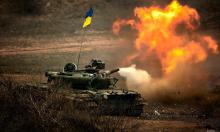New Russian money may spark religious wars, priest says
The new 1,000-ruble banknote depicts the Syuyumbike tower with a crescent and the former Palace Church of the Kazan Kremlin, which does not have a cross, clergyman Pavel Ostrovsky wrote on his Telegram channel.
The church building currently houses the Museum of the History of Statehood of the Tatar People and the Republic of Tatarstan.
Museum leading specialist, Liliya Khairutdinova, said that the cross had been removed from the temple with the advent of Soviet power. During Soviet times, there was a warehouse, then an archive and a canteen inside the temple. The museum was opened in 2006.
"Comrades, have you completely lost fear? Don't play with fire,” the priest wrote.
The majority of Russian residents do not know the history of the Kazan Kremlin. They will simply be using the new banknotes with a temple without a cross on it that is shown next to the minaret with a crescent, the priest noted.
Such a mishap, the priest believes, occurred due to the "stupidity of designers.” It could also be a "a deliberate provocation that Islamic believers from Tatarstan had staged a number of times before.
On October 16, the Central Bank presented new designs of 1,000 and 5,000 ruble banknotes. They are available for viewing on the official website of the Central Bank. The main image of the thousand-ruble note shows the Nikolskaya Tower of the Nizhny Novgorod Kremlin. On the reverse side, next to the former Palace Church and the Syuyumbike Tower, the banknote shows the Museum of Archeology and Ethnography in the city of Ufa. The front side of the five-thousandth banknote depicts the Europe — Asia monument sign in Yekaterinburg, wheres the reverse side shows "The Tale of the Urals” composition in Chelyabinsk and the "66th Parallel” sign in Salekhard.
Subscribe to Pravda.Ru Telegram channel, Facebook, RSS!


